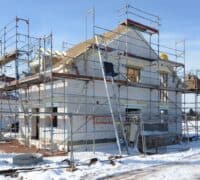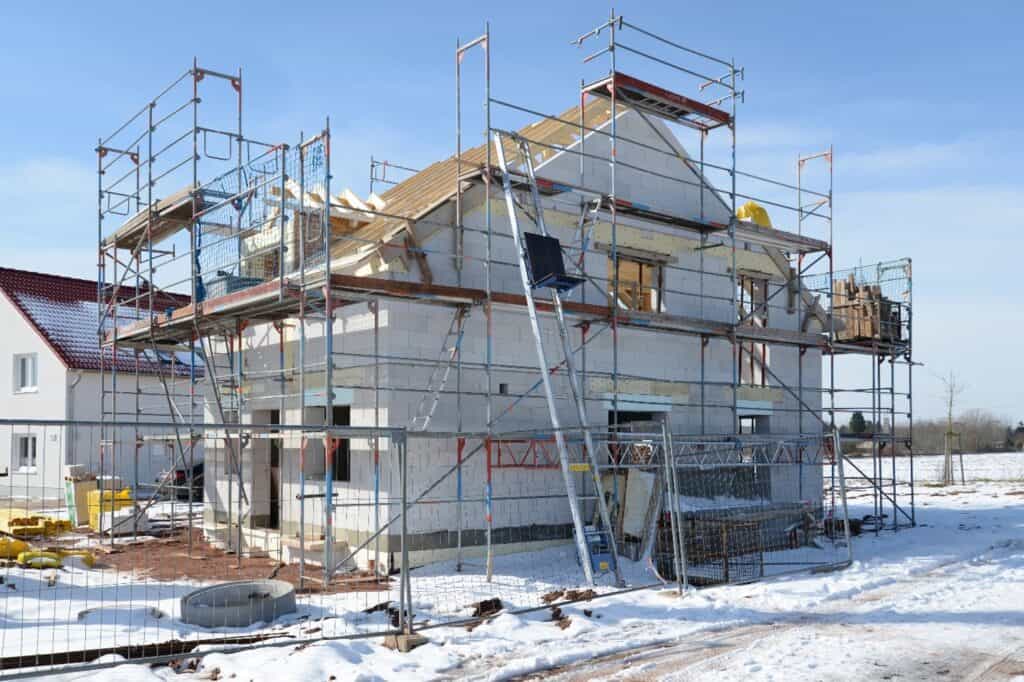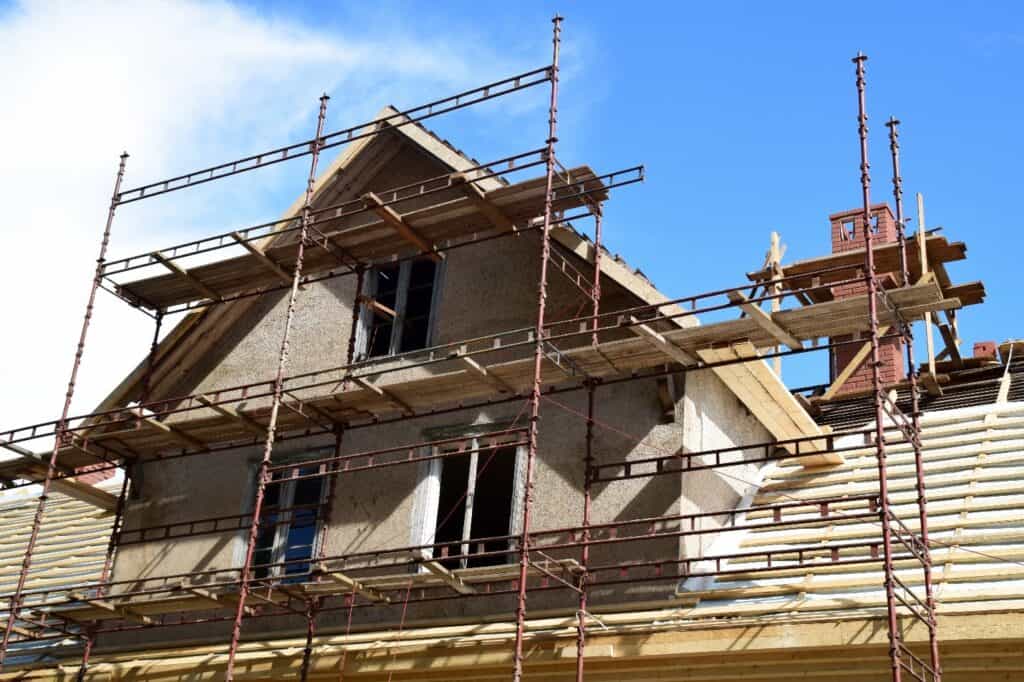
Risk is a common factor in any form of construction. Residential contracting is no exception. Both new home construction or remodeling is lined with many risk that need to be assessed and managed by both contractor and owner.
From the owner’s perspective, they try to mitigate their risk by purchasing insurances and hiring a the right building contractor. Much of their risk is a consequence of not purchasing insurance and not hiring the right building contractor or the contractors risk exposing the owner to factors that were not contractually defined.
While the building contractors’ general risk of residential contracting is commonly associated with those typical to the construction industry consisting of both systemic and non-systemic in nature.
Systemic perils are traditionally related to 3 of 4 types of residential contracting risk which we will discuss shortly. Non systemic risk are related perils that can not be predicted such as weather.
Did You Know?
Well-designed outdoor living spaces can increase a home’s resale value by up to 12%, especially in warm climates like Houston where they can be enjoyed year-round.
Types of Residential Contracting Risk
There is simply stated 4 types of general residential contracting risk. There are financial risk, contractual risk, operational risk and environmental risk that can result from internal or external sources.
Financial risk; Is the risk associated with financial consequences of an adverse action. For instance, the cost associated with such items as change orders, interest expense from project delays and cost overruns of fixed cost contract amounts.
Contractual risk; Is generally associated with contract agreement matter such as breaches and contract clause performance requirements.
Operational risk; are typically related to the operation activities of construction such as theft, errors & omissions, physical personal injury and poor workmanship.
Environmental risk; represents the risk associated with weather, property damage resulting from external sources and foreign elements like radon gas.
Does Residential Contracting Perils Have a Cost?
We commonly hear from homeowners that they want the most competitive price for their proposed home construction project. You may have said this yourself at one time or another.
When a building contractor hears this, it typically translates to, we want the cheapest price.
If the total project cost is the determining factor for your home construction project, then to reach your construction budget goal requires a long and hard look at the systemic exposure you may not be aware you are accepting with the cheapest bid.
The common systemic risk associated with any new construction and remodeling projects are:
- Additional Cost
- Workman Safety
- Quality
- Consequential
In order to properly assess unforeseen peril exposure, we must understand more about the type of work that is required and recognize the owner’s tolerance for risk acceptance.
There are systemic exposures that the homeowner may understand and accept, while there are other such exposures that they have not considered or do not know exist.
We will have a discussion about the factors that increase the probability of owner’s residential contracting risk and what you can do to mitigate the exposure.
Defining the Project Scope of Work
Developing a clear scope of work is essential when attempting to mitigate the owners risk.
Developing bid specifications and supporting documents for a house construction project is required to compare apples to apples.
It starts with understanding what actual work is required to be done and secondly recognizing the difficulty in the required skill to achieve the desired result.
For example, the painting of your interior walls is not the same skill required as framing a roof.
The project scope of work is the detailed instruction manual for the bidding and execution of your house construction project. The scope of work should include the following documents:
- Set of plan drawings including the immediate and surrounding areas,
- Dimensional floor plan drawings with elevation images,
- Detailed construction sections of the required assembly,
- Description of materials required to be used,
- The required level of acceptable tolerance for workmanship,
- The grade and quality of materials acceptable for use,
- Detailed description of the required workmanship performance standards
These documents set an even playing field for the construction contracting to prepare equally measured bid proposals.
They also clearly define what is expected of the professional. Without these documents, the owner only has the building contractors bid proposal and the undocumented information provided during pre-bid conversations.
If the bid proposal is incomplete or lacks the details of the step-by-step process and procedures of the project, the owner is completely exposed to many of the following systemic performance risk;
- Substitution of inferior materials,
- Low grade products,
- Substandard workmanship,
- Poor overall project performance
Selecting the Proper & Qualified Building Contractor
There are many different building contractor types to select from when evaluating your residential contracting needs.
There are building contractors Houston that work for daily wages which we will call pick-up truck contractors.
There is a second type that has a few crews that do the work and the owner will handle the sales and project management.
We will call this second type of contractor a self-performing contractor. We will call the third type of contractor a product home improvement contractor.
Product home improvement contractors are usually larger in size and have multiple crews to handle multiple home improvement projects like roofs & siding or windows & doors.
The fourth type of contractor is a general contractor, which are full-service home construction contractors that facilitate major project by using subcontractors.
They can be a combination of any of the previous three examples, but will undertake projects that require multiple trade skills to accomplish the project’s goal.
Selecting the proper house contractor for the qualifying project is half the battle. If your project requires one contractor, such as a painter for interior painting or installing a new roof, you are well advised to hire a home improvement contractor that specializes in these practices.
Although the risk of hiring any home improvement contractor remains unless you require these house contractors to provide you:
- Certificate of Liability Insurance
- Certificate of Workman’s Compensation
- Detailed Proposal including Scope of Work, Description of Materials, Fixed Price,
- Exclusions of Scope of Work
Understanding Consequential Risk
This is one of the house construction risks that is often misunderstood. If you hire a building contractor that does not have proper workman compensation insurance and a workman gets injured or dies while working on your project, you can be found liable for the cost of his damages realized.
Depending on your homeowner insurance policy, you may also be personally liable for their death or injury.
It is common for older homes to have their water supply pipes replaced at some point or to have their roof replaced.
If the home improvement contractor does not have the proper comprehensive general liability contractor insurance and your homeowner’s policy requires you to carry builders risk insurance during remodeling projects, your exposure could be catastrophic if your house experiences water damage from defective workmanship.
Understanding and requiring the proper insurance is the only effective method at mitigating the consequential damages that can happen during a residential contracting project.
Evaluating Project Risk
So, what is the decisive factors in assessing the proper risk associated with these two different residential contracting projects.
Looking at these projects from a worst-case scenario, we attempt to understand how an owner can mitigate their risk.
Let’s use the example of home improvement contractor, like a painter and a roofing replacement contractor.
Both home improvement contractors in our example can expose the homeowner to the same risk factors.
Either contractor tasks, if careless done can cause damage to the house. The painter can drip enamel on fabrics (carpet, drapes, upholstery), while the roofer can misapply flashing that causes rain water to infiltrate and damage the interior finishes.
Both building contractors can get hurt while working on your home. Both of them can do poor job, which requires the owner to pay someone else to redo the previous contractor’s work. These types of occurrences happen every day.
So, as a homeowner you must carefully evaluate the specific task of each of the contractor’s proposals to determine your risk exposure.
The other option you have is to hire an adviser to assist you in developing your risk assessment.
The third option that is available is to hire a general contractor to handle these matters for you.
Although home product replacement projects get more expensive than dealing directly with a product replacement contractor.
Ready to elevate your lifestyle with stunning outdoor living spaces in Houston?
Residential contracting is an expensive proposition and the hiring of the right building contractor can lead to greater issues than the original problems.
As a general rule, there should not be much more than a 10% price difference if you are comparing comparable building contractors.
If there is a larger price spread between competing contractors, this should be a red flag to you as the owner that something is missing or you do not have comparable bid contractors.
You should go back through the risk factors we have reviewed and determine the source of the disconnection.
So, the cheapest price presented may not be the best price presented. Rather in many cases the cheapest price can result in being by far the most expensive price.
FAQs related to living spaces in Houston
1. What are the benefits of outdoor living spaces in Houston?
Outdoor spaces expand usable living areas, improve home value, and provide ideal spots for entertaining year-round in Houston’s mild climate.
2. What features are essential in Houston outdoor living designs?
Key features include outdoor kitchens, covered patios, swimming pools, water features, and durable landscaping suited to Houston’s weather.
3. How do I start planning my outdoor living space?
Begin by visualizing the space, listing desired features, and prioritizing them based on lifestyle needs and available budget.
4. Are outdoor kitchens practical in Houston?
Yes, they’re highly practical. Houston’s climate supports outdoor cooking most of the year, but using weather-resistant materials is essential.
5. Can outdoor living spaces increase my home’s value?
Absolutely. Well-designed and maintained outdoor areas enhance curb appeal and are attractive features for potential homebuyers.













